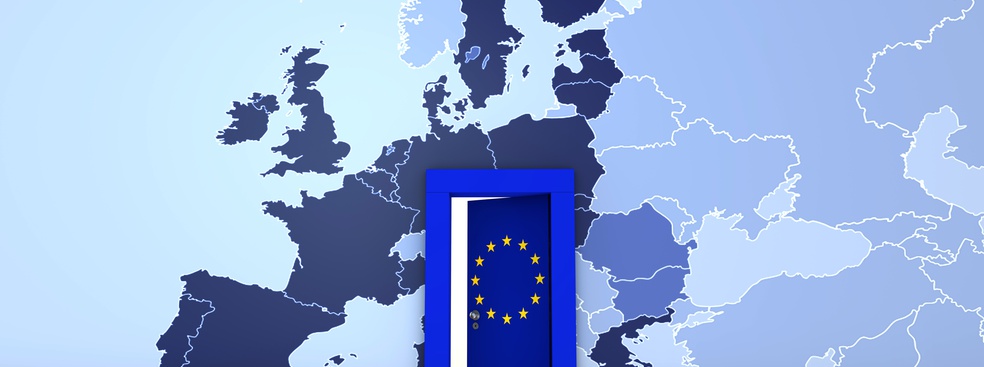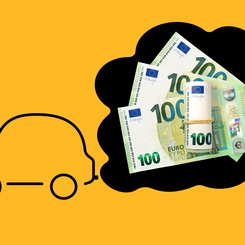Our world’s turbulence means that Europe’s economic sovereignty is facing existential crises, including a political and economic showdown between the USA and China, isolationism (including in member States), illiberal democracies and all-powerful companies. While the EU is aware of this issue, as highlighted in recent reports, a lack of internal agreement is cause for worry -but the EU has always been resilient. In this article, Viviane de Beaufort, professor of the Jean Monnet Chair, Director of the European Centre for Law and Economics and co-director of the European affairs track, explains the notion of European economic sovereignty and identifies subjects that should be priorities of the 2024-2029 mandate.
Why does European economic autonomy matter?
The position of the European Union on economic autonomy is a major concern. In light of the challenges – and the dangers – facing our world, the question of European economic sovereignty becomes urgent. While the concept is not new, it’s now being discussed frequently across all sectors: how can we prevent Europe from losing the race and becoming nothing more than an aging regional power?
The concept of European sovereignty was introduced by Mario Monti talking about an “open but not disarmed” market in the 2000s, Pascal Lamy on the importance of rules to support our collective preferences, and Michel Barnier who wanted to ensure reciprocity. The 2019-2024 mandate of the European Parliament and the European Commission has seen a number of texts put forward with increased protection of the market: customs duties on Chinese electric cars under the new anti-subsidy regulation are one example.
Just how the European Union will achieve sovereignty is a complicated question: the EU does not have the same advantages it did 15 years ago and is more dependent when it comes to sourcing products or strategic materials. Could the European Union create a path between industry giants the USA and China, while facing its own internal challenges? Can it still preach key values of open-mindedness and human rights?
The EU’s evolving position
The Letta reports in April 2024, then the Draghi report in September 2024, formalize the new European position, taken up as the basis of the policy of the European Commission (Compass for Competitiveness) and on November 8th, 2024 by the Member States, while it has long clashed with the attachment to market orthodoxy.
The idea of European sovereignty might seem like an oxymoron. Historically, it designates a state’s ultimate authority on its territory and internal affairs, without foreign interference. This concept is paradoxical when applied to the European Union, an entity composed of sovereign member states, dedicated to the free market and international cooperation. However, it is essential to guarantee the survival of the European Union.
Member states share the quest for economic autonomy, given the increased competition between the EU, the USA and China and the EU’s internal economic challenges like slow growth and deindustrialization. Adopting effective policies to boost competitiveness is made complicated by the differing opinions of member states. For example, take the German chancellor’s recent resistance to the Draghi report’s idea of using Eurobonds again, i.e. a shared loan like the one after COVID-19.
Toward sovereignty: from talk to action
Today, European economic sovereignty has moved from expert reports and parliamentary discussions to the public arena. The term “sovereignty”, accompanied by “competitiveness”, is bandied about in the European political arena, and in research and professional circles. Geopolitical, economic and legal aspects need to be taken into account in order to arrive at a concrete collective application and the adoption of autonomous EU texts incorporating elements of protection (FDI filtering, AI regulation). In critical sectors such as energy, semiconductors and raw materials, specific measures have been taken. The Chips Act, which came into force in September 2023, is a good example: it aims to quadruple semiconductor production on the continent, a crucial step given that 80% of global production comes from Taiwan. The European Union also adopted the Critical Raw Materials Act (CRMA) in March 2024, which sets targets for reducing dependence on imported critical raw materials.
Europe’s dependence on global supply chains and external energy sources exposes the continent’s vulnerabilities. The COVID-19 pandemic highlighted the fragility of supply chains, in particular for medical and pharmaceutical supplies and electronics. The inability to quickly respond to public health needs highlighted the importance of independent production capacity. The war in Ukraine highlighted Europe’s dependence on Russian gas and the resulting need to reinforce energetic independence, which the EU has been working hard to achieve. TheCarbon Border Adjustment Mechanism, which entered its transitional phase in 2023, is an example of this strategy, aimed at equalizing carbon prices between European products and imports.
While the energy transition is an opportunity for reindustrialization, it also requires considerable investment and logical industrial planning to succeed. Improving autonomy should not be limited to the energy sector – a broader approach is needed. The European Union has adopted several important measures, like NextGenerationEU and The European Green Deal , which demonstrate the bloc’s willingness to prioritize economic and environmental resilience.
The Clean Industrial Pact aims to strengthen the capital markets union to enable European companies to raise funds on domestic financial markets, thus reducing their dependence on foreign capital.
The European Union has also adopted protective measures to defend its strategic industries. The Buy European and sustainable Act imposes environmental and local content criteria on European public procurement contracts. Nicknamed the European IRA in reference to its American equivalent, this act marks a significant turning point in a traditionally liberal European policy. At the same time, the introduction of provisional countervailing duties on electric vehicles imported from China, adopted after an investigation revealed unfair subsidies, reflects this desire to regulate imports to protect local industries.
Conclusion
The European Union is committed to international cooperation and has adapted its relationships to promote a normative order that represents its ethics and operational framework. Putin’s invasion of Ukraine represents a radical departure from this norm. The EU needs to find its path to preserve peace and enforce an international order based on rules that preserves economic security – a long-term engagement to transform society and the European economy in a sustainable manner. Research and innovation are a shared priority and need significant funding – and the private sector must step in, since Europe’s budget has limited flexibility.
In the last few months, there have been some positive signs when it comes to Europe’s alignment: Franco-German collaboration, the Polish presidency, strategies for bypassing Hungary’s Victor Orban, and an improved relationship with the United Kingdom.
We must be optimistic and hope that external threats will allow the EU to demonstrate its capacity for resilience.
References
This article was based on the article “Souveraineté économique de l’UE – possibilité ou quête du Graal ? “Viviane de Beaufort, Revue du droit de l’Union européenne 4/2024, December 2024.
1. Les articles du blog Europe du CEDE : https://europe.vivianedebeaufort.fr/.
2. Amelot, L. (2023, septembre). Stratégie de sécurité économique de l’Union européenne : enjeux, lacunes et fragilités (Note d’actualité n° 87). Institut Thomas More.https://www.institut-thomas-more.org
3. Arroyo, F. (2023, novembre). La transition énergétique reste conditionnée à la souveraineté industrielle en Europe. ÉcoRéseau Business.https://www.ecoreseau.fr
4. Beaucillon, C., & Poli, S. (2023, juillet). Strategic autonomy: A new identity for the EU as a global actor. European Papers, 8(2), 417–428.https://www.europeanpapers.eu/en/system/files/pdf_version/EP_EF_2023_I_012_Charlotte_
5. Beaucillon, C., & Poli, S. (2023, juillet). Setting norms and promoting a rules-based international legal order: Enhancing strategic autonomy through the autonomy of the EU order. European Papers, 8(2), 447–457.https://www.europeanpapers.eu
6. de Beaufort, V. (2019). Droit européen des affaires et politiques européennes (406 p.). Bruxelles: Larcier.
7. Bertoncini, Y. (2023, octobre). Quelle “souveraineté européenne” après la déclaration de Versailles ? Fondation Robert Schuman, Schuman Papers, (n° 721).
8. Cohen, E., & Buigues, P.-A. (2014). Le décrochage industriel (438 p.). Paris: Fayard.
9. Genovese, V., & Gwyn Jones, M. (2024, juin). Face aux États-Unis et à la Chine, les dirigeants de l’UE appellent à un vaste accord sur la compétitivité. Euronews.
10. Guihery, L. (2024, juin). Bilan de la mandature 2019-2024 de l’UE : face aux crises, les prémices d’une Europe puissance ? The Conversation.
11. Jerouel, Y. (2023, juin). L’Europe et la sécurisation des approvisionnements en ressources minérales : de l’urgence stratégique au pragmatisme diplomatique. Fondation Robert Schuman, Schuman Papers, (n° 675).
12. Schinas, M. (2012). The EU in 2030: A long-term view of Europe in a changing world: Keeping the values, changing the attitudes. European View, 11, 267–275.









